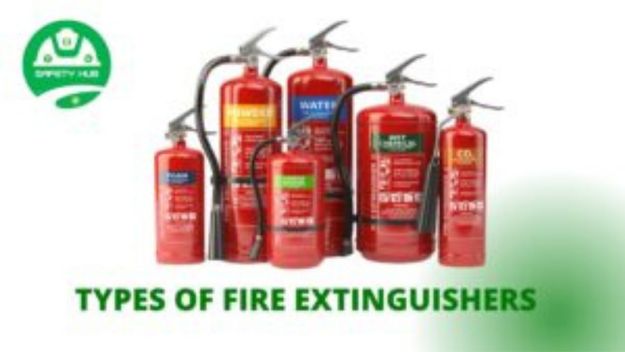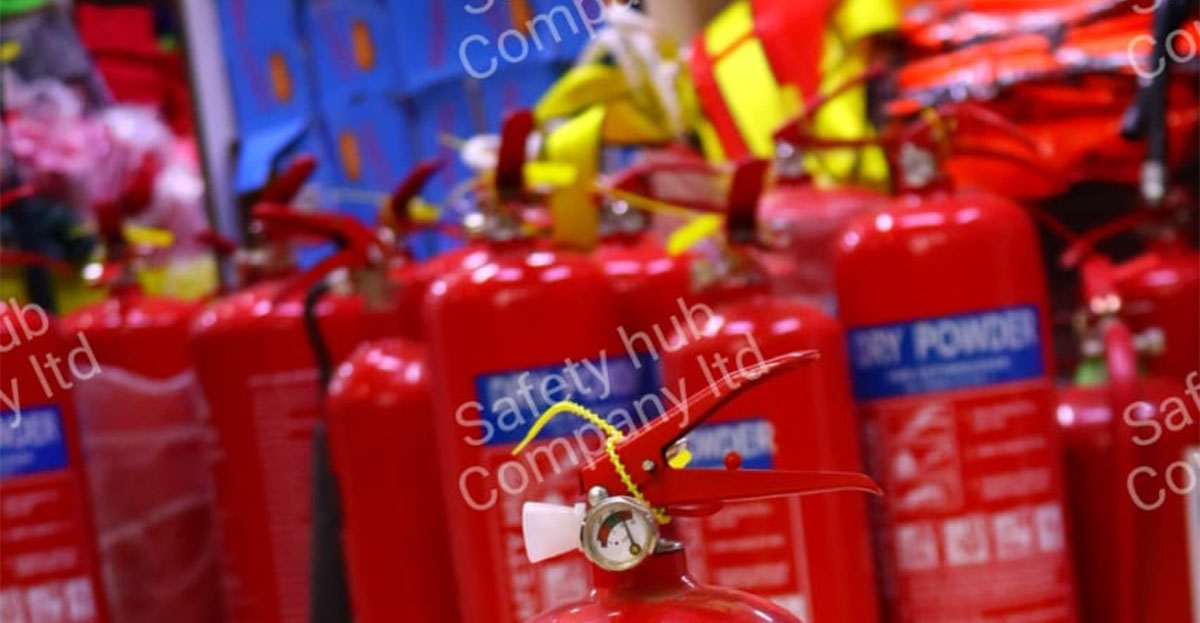- Empty cart.
- Continue Shopping
DIFFERENT TYPES OF FIRE EXTINGUISHERS

Different types of fire extinguishers for different classes of fires.
Despite the regulatory compliance that requires buildings to have fire extinguishers, it’s important to have them mainly for your safety. However, most people don’t know that a single fire extinguisher does not work on all types of fires.
Each type of fire extinguisher is designed to tackle a certain class of fire that if not used correctly may prove ineffective or worsen the situation.
To determine the fire extinguisher to purchase, you first have to identify the fire class likely to occur in your area.
Different classes of fire extinguishers

Though there are only five types of fire extinguishers, they are classified into different classes. Fire extinguishers have one or more symbols to indicate their class.
There are divided into six classes which include:
- Class A– these are fires that are caused by combustible carbon-based solids such as textiles, wood, or paper.
- Class B– these are fires caused by flammable liquids like petroleum, diesel, and paraffin
- Class C– these are fires caused by flammable gases like methane, propane, and butane
- Class D-this are fires caused by burning metals like magnesium, lithium, and aluminum
- Electrical fires– it’s not a recognized class but it’s categorized into an informal class E that involves live equipment and electrical sources.
- Class K– these are fires caused by fats, grease, and cooking oils, mostly in kitchens
Fire extinguisher types chart
The chart shows the type of fire extinguisher and the type of fire it extinguishes as well as color codes for each extinguisher.

Different Types of Fire Extinguishers
There are various types of fire extinguishers that we stock for our clients:
- Water mist fire extinguisher
- Clean agent fire extinguishers
- Wet chemical fire extinguisher
- Carbon dioxide fire extinguisher
- Dry powder fire extinguisher
Water mist fire extinguisher
This type of fire extinguisher releases microscopic de-ionized water molecules in such a microscopic fog-like form that decreases the level of oxygens that in turn suffocates the fire.
It can also be used for electrical fires as de-ionized water is a non-conductor. It is effective for extinguishing class A, B, C, and K fires.
Its label is bright red and is commonly used to extinguish materials such as textiles, papers, and wood. It’s not advisable to use it for electrical fires, flammable gas and liquids, and kitchen fires.
It’s suitable for schools, offices, warehouses, hospitals, and residential apartments.
Foam fire extinguishers
These are extinguishers that spray a type of foam that expands when it hits the air and blankets the fire. The foam blankets prevent vapor from rising off the liquid to continue igniting the fire that eventually burns out.
The foam also has a cooling effect because it’s mixed with water.
It’s mainly used for extinguishing liquid fires and class A fires. They have a cream label and are not advisable to use in kitchens, electrical fires, and flammable metals.
It can be used in offices, warehouses, hospitals, schools, and buildings with flammable liquids
Clean agent fire extinguishers
This extinguisher is often used for class B and C fires. It’s a type of gaseous fire suppression that is stored in liquid form that converts into gas form after its sprayed.
The gas which is non-conductive leaves no residue and extinguishes fire by reducing the oxygen levels and combatting the fire.
It’s safe for use and is eco-friendly and hence an idea for rooms filled with computer and electrical appliances.
Wet chemical fire extinguisher
It’s commonly used for fat and cooking oil fires, especially in kitchens with deep fryers.
This type of fire extinguisher contains a pressurized solution of alkali salts that cools the flame by creating a fine mist and preventing them from fuelling the fire.
It first cools the fires and then the chemical reaction seals the surfaces preventing re-ignition. Its mainly used for kitchens but can also be used for class A fires.
Its label is yellow and does not use for flammable liquids, electrical fires, and flammable metals.
Carbon dioxide fire extinguisher
This contains pressurized carbon dioxide that suffocates the fire and causes it leaves no residue, it does not cause damage to the electrical items or cause a short circuit.
Although the discharge from the fire extinguisher is pretty cold that may cause the fingers to freeze to the horn if they are not fitted with the double-lined frost-free swivel horns.
They are often used to extinguish class B and electrical fires that involve burning liquids. Its label color is black and is not advisable for kitchens, combustible materials, and flammable metals.
It should be placed near the source of fire risk or near the fire exits.
Dry powder fire extinguisher
They are also called ABC fire extinguishers because they tackle class A. and C fires. The extinguisher fine chemical powder that is composed of mono ammonium phosphate that acts as a blanket and suffocates the fire.
They extinguish class A, B, and C fires as it’s a non-conductor and extinguishes liquid or gas fires. However, they are not recommended to be used in enclosed spaces as they can be easily inhaled, and difficult to clean up the residue after.
Its label is blue in color and it’s commonly used for flammable metals like titanium and magnesium. It’s effective for places like welding businesses, garage forecourts, businesses with commercial boilers, and businesses using flammable gases.
Importance of fire extinguishers
- Regulatory compliance
The fire order regulation requires that all premises and every type of building carry out a fire risk assessment which entails detecting hazards in the workplace, finding solutions to problems, and implementing preventative actions.
One should install fire extinguishers in properties to provide means of fighting small fires. It’s also beneficial to provide fire safety training to residents and also employees to ensure that they are able to tackle these incidences.
The fire extinguishers carry a label with the class fires and the contents it contains. Installing the right fire extinguishers should be done in the building.
- Protecting the environment
Fire is a disaster. Fire extinguishers extinguish fires that would have otherwise polluted the environment through the smoke and the burning debris.
The ability to control fire creates an opportunity to avoid air and environmental pollution. A good environment is good for better living.
- Safety purposes
Your safety should come first. Fire extinguishers save lives by putting out fires. The user picks the fire extinguisher where it’s installed and the fire is attacked to avoid it spreading to other areas.
Lack of tackling this fire on time might even claim a life.
However, the right fire extinguisher matters to avoid it failing to put out the fire. If not sure about the right extinguisher, contact us for inquiries.
- Prevent damage to property
Different types of fire extinguishers will help in prevetion of fires in Kenya. Fire burns down properties to ashes and having a fire extinguisher helps mitigate it before it becomes a disaster. Property is a valuable asset, it’s better to protect you and your house by having fire extinguishers in place.
- To increase productivity and profits
For businesses, fire safety safeguards the business’s assets and the employees as well. This lowers employee absenteeism due to injuries and high turnover.
Fire safety creates a safe and healthy work environment.
Read also on Fire Extinguishers
- Consideration before buying a fire extinguisher
- Best fire extinguisher supplier in kenya
- Fire extinguisher refilling prices in Kenya.
- Safety Hub your safety champion
- Importance of fire safety traing in Kenya.
Conclusion on types of fire extinguishers
In conclusion, your safety should come first. Severe fire can burn down the building and cause injuries or even death.
To lower the risks, purchase the right fire extinguisher from Safety Hub Company Limited where We offer a wide range of certified fire extinguishers suitable for various applications at an affordable price. 








